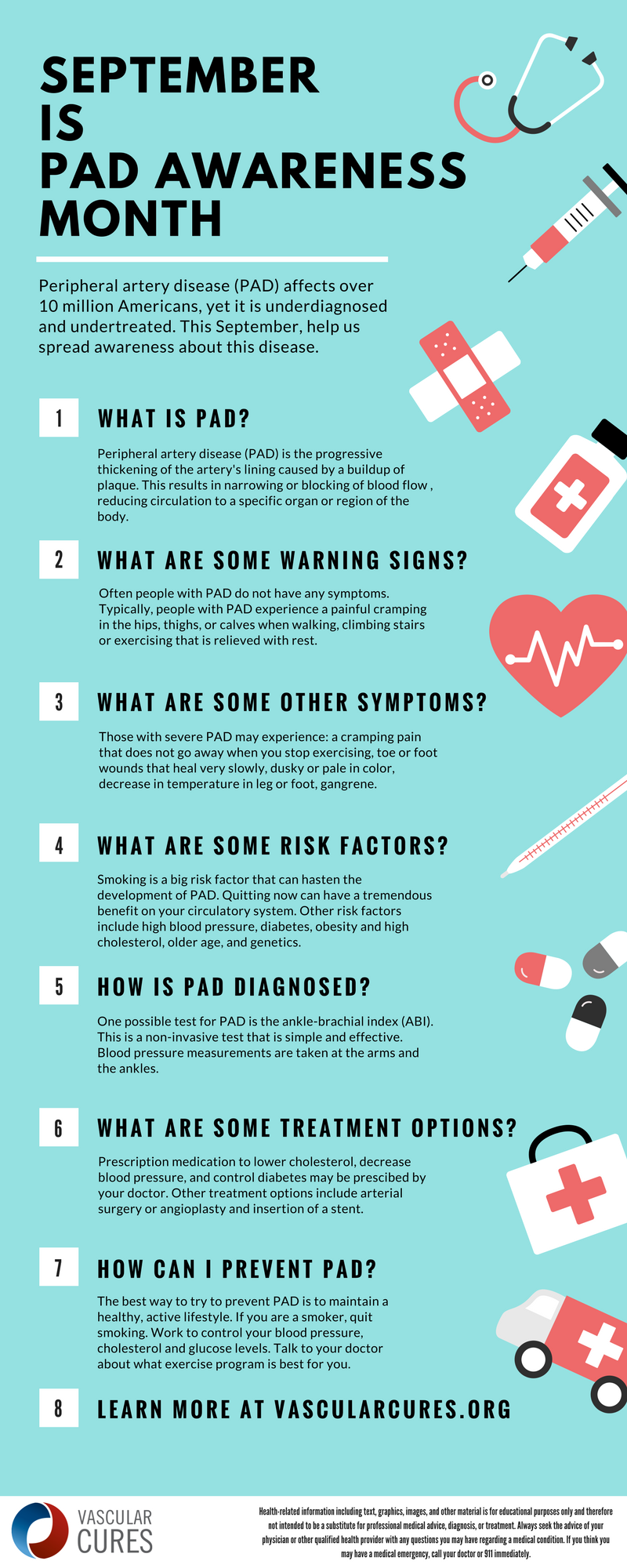September 3, 2017— According to the U.S. Centers for Disease Control and Prevention (CDC), approximately 18 million people in the United States suffer from Peripheral Artery Disease (PAD), a common circulatory problem in which narrowed arteries reduce blood flow to the limbs. Estimates suggest that anywhere from 12 to 20 percent of individuals over the age of 60 are living with PAD. Because of the widespread effects of PAD, September has been designated as Peripheral Artery Awareness Month, with the hopes of informing people about PAD and the available treatment options that can prevent unnecessary limb amputations and result in longer and better quality of life for patients.
Approximately 160,000 to 180,000 of the estimated 18 million Americans with PAD will undergo a limb amputation as result of PAD-related condition this year, resulting in lower quality of life, high medical costs, and shorter life expectancy. But even with these alarming numbers, general population awareness of PAD is estimated at only 25 percent.
Symptoms of severe PAD include leg pain, wounds on the toes or feet, gangrene and a loss of leg mass compared to the rest of the body. Individuals are at greatest risk for PAD if you have high cholesterol, high blood pressure, or diabetes. African American and Hispanic populations are also at higher risk as are individuals with a history of smoking. If you are an at risk individual and you would like to sign up to see if you win one of many free screenings we will provide this month, please call us at (502) 897-5139.
